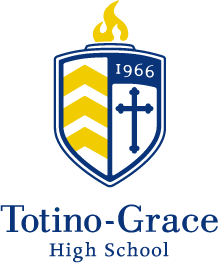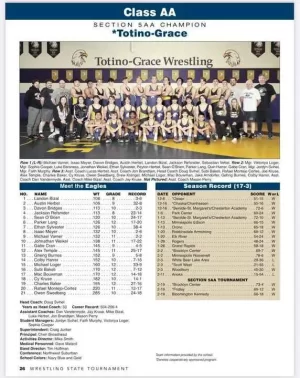Technology of the Future: Classrooms of the Future
May 23, 2016
There is so much new technology that is improving the world around us. There are so many that can change the way people study and learn in and outside of school. Some of the more common inventions are the 3D Printer, Flexible Displays, Cloud Computing, the Google Glass, and Virtual Reality. There are some inventions that aren’t known about very well like the Multi-Touch LCD Screens, and Universal Translator. There is so much technology being invented everyday that the way we learn right now might not be the same way we learn in a few short years. Imagine what a classroom will look like in a couple years with all the technology that is being invented.
3D Printer
The 3D Printer is already known about at Totino-Grace. TG currently has one in the Engineering room. But what if every classroom could have a 3D Printer that is specifically for children? The 3D Printer could be used by people of all ages, from children to adults. Having a 3D Printer in each room could lead to many possibilities. Science classrooms could make so many things like tools, bones, and organs of a human body. Math classes could use the 3D Printer to make slopes and many shapes that you have to try and find the area of the object. The CAD classes could actually make the objects they create instead of just looking at the object on a screen. Schools could make a class where all you do is work with the 3D Printer and making objects of your choosing. 3D printing can allow students to mess around with their designs without have to pay a high costs and have to spend a lot of time.
Flexible Displays
Many people still take notes using paper and a pencil. With the Flexible Displays you can take your smartphone or tablet with you without having the weight of it in your bag and you can have technology that is as thin as a piece of paper. The Flexible Displays are much like a piece of paper. You can roll them up into tubes or fold them like newspapers. Paper-thin Smartphones don’t only have to be used for recreational purposes, they can be used for school work and for fun. These plastic e-papers are very durable and they are interactive. You can swipe, tap, and pinch, these flexible paper-thin displays. And with these e-papers we could reduce the cost of making paper and using paper in classrooms and that could help make the environment better.
Cloud Computing
Cloud Computing is changing the way homework is being turned in and how homework is being done. At TG right now, students are able to access all their homework on a single electronic device using the cloud. That means that students no longer have to carry around heavy textbooks and school supplies. All you need is a working internet connection to be able to have all that data. Teachers can use the cloud to collect and grade students work online. Students will be able to access grades, comments, and work from any type of technology. Having the Cloud at TG makes doing school work so much easier to do anytime and anywhere. Soon you might not even have to travel anywhere to go to class, you could attend class from your bedroom.
Google Glass
Everyone has probably heard of the Google Glass but you probably haven’t heard of all the possibilities that you can do with that technology. With Google Glass you can record lectures, live streaming them for remote access. Teachers could record hands on activities without having to try and hold a camera at the exact same time. Google Glass could also help with learning many subjects in school. In History class you could go to a museum and Google Glass will explain what you are looking at. Also at museums you could have augmented reality historical tours without having to put on the headphones that they have there for you.
Virtual Reality
Imagine being able to go into space and being able to feel the gravity on any planet. What if you could stand next to a dinosaur and see how big it was. With Virtual Reality that is possible. Kids learn better with hands-on activities. It is less likely that a student will get bored or become unfocused when they are actually doing the things that they are being taught. In history classes you could travel to ancient cities and historical events, and in math class you could generate 3D objects to show abstract ideas.
Multi-Touch LCD Screens
Some of the newer technology you might not have heard of like the Multi-Touch LCD Screens. The Multi-Touch LCD Screens sound a lot like a smart board that TG already has, but one of the differences is that it is capable of sensing multiple touch inputs from students. That means students can all be working on the board simultaneously. With the same technology you could have a LCD Touch Board. Instead of having one big board in front of the classroom. LCD Touch Boards will be multiple giant tablets that students can work on. Students could just sit around the tablet and because it has the same technology as the new LCD board it will be capable of sensing multiple touch inputs.
Universal Translator
Another piece of technology that many people don’t know actually exists is the Universal Translator. The Universal Translator can be helpful for students that are learning a different language. The Universal Translator translates what the user or the other person is saying by translating what is said and then speaking what the other person said in any desired language. It would be helpful to learn other languages faster if you have your own personal translator. It also would be cool to be able to travel all over the world for school and not have to know how to speak that language. You could go to other countries and still understand them because the Universal Translator will translate it all for you. Mission trips would be more fun to be able to communicate with the people in their native language.
There are many new technologies that can improve the world and improve everyday life. So many of them have already started to make there way into everyday life. The technology that is in this article like the 3D Printer, Flexible Displays, Cloud Computing, the Google Glass, Virtual Reality, the Multi-Touch LCD Screens, and Universal Translators can all help improve learning inside and outside of classrooms. If that means not going to school but still going to school with Cloud Computing, being able to print a 3D object with a touch of a button with the 3D Printer, being able to communicate with someone that doesn’t peak the same language as you with the Universal Translator, or be able to go into space or back in time without leaving your classroom. All this technology is only a few years away or is already being inputted into everyday life. Now it’s time to think. What do you think a classroom look like in 10 years?





